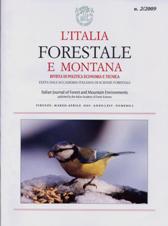Published
2013-04-17
Keywords
- wild ungulates,
- browsing,
- Stelvio National Park
Abstract
Since hunting was prohibited in 1983, consistence of deer population within Stelvio National Park has increased. This phenomenon has caused grazing and debarking damage to forest regeneration. In 1997, the National Park Consortium started a three year project aimed at standardizing and enhancing knowledge on deer populations and on their interactions with other ecosystem components within the Park. A survey has been carried out to evaluate the impact of wild ungulates on forest regeneration. The whole forest area of the Park has been divided in 989 rectangular areas 50 ha wide (raster surface). In 847 (86% of total) of these areas a permanent sample plot 50 m2 (25x2 m) was drawn out. On the whole, 55.535 young trees have been analyzed for browsing damage by ungulates.For browsing damage, only trees between 25 cm and 1 m high have been considered, because the presence of snow during winter alters signs under 25 cm height. In the Alto Adige sector, bites are particularly high in the Lasa area on coniferous trees, in Rabbi area on red spruce, and in Valfurva area on larches. Bites on deciduous trees are high everywhere. Comparison between different areas requires a certain prudence, because of the differences in tree species and regeneration density. Percentage of bites can be used as a parameter to measure browsing intensity, and thus evaluate impact of wild ungulates on forest ecosystem. A complete analysis must consider browsing duration and specific location as well. Furthermore, impact on trees regeneration must be related to wild ungulate population consistence and dynamics, seasonal movements and environmental characteristics


